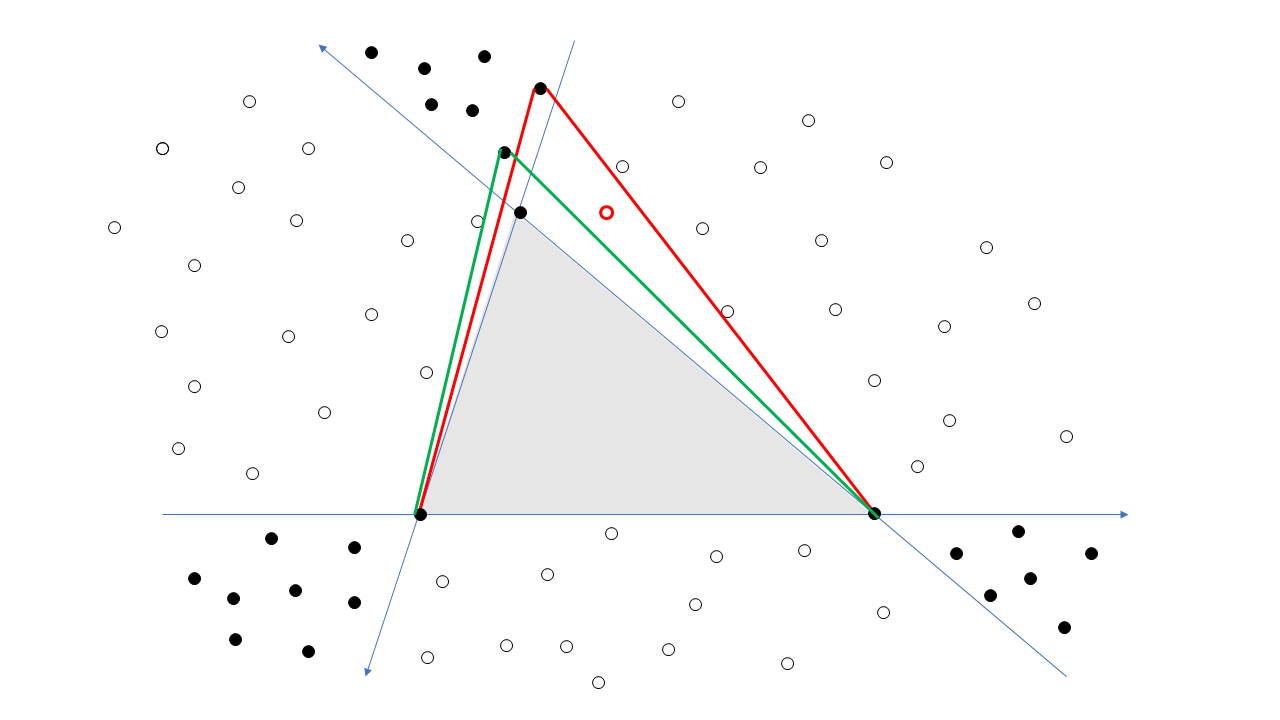What is known about the complexity of and/or practical algorithms for reporting all triplets of points from finite set of at least four points of which no three are collinear in the Euclidean plane, that define a triangle that contains exactly one point from the set in its interior, i.e. whose barycentric coordinates are strictly positive?
Edit.
after further thinking about the problem, I tend to believe that $O(n^4)$ is the best time complexity possible.
That conclusion comes from the observation, that the inner point $D$ is adjacent to three empty triangles $\Delta_{ABD},\,\Delta_{BCD},\Delta_{CAD}$ and the lower bound for enumerating all empty triangles can be done in $O(n^3)$ as described in Searching for Empty Convex Polygons; in that algorithm a starshaped polygon $P^*_D$ is described, whose edges are visible from a given point $D$ that shall in this question be the inner point of otherwise empty triangles.
The problem of reporting all triangles with unique interior point $D$ would then amount to reporting all directed triangles with their open arcs inside $P^*_D$; the directed graph that contains those triangles corresponds to the visibility graph of $P^*_D$ with arcs corresponding to edges oriented to render $D$ to their left.
Beating the $O(n^4)$ conjectured lower bound would require a sublinear-time algorithm for reporting all directed triangles in an oriented visibility graph of a star-shaped polygon, which doubt is possible.
elaborating on the partitioning idea that Joseph O'Rourke sketched in his comment and combining it with utilizing empty triangles $\Delta_{ABD}$ to identify candidate points $C$ that could define a triangle $\Delta_{ABC}$ with unique innr point $D$, one finds that all solid points outside the shaded empty triangle qualify:

From the picture it can be clearly seen that the set of solid points contains all points that augment the shaded empty triangle to one with unique interior point.

